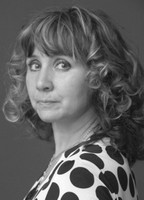Potential competitive success rating mathematical model for elite rhythmic gymnasts
Фотографии:
ˑ:
Teoriya i praktika fizicheskoy kultury №6 2017, pp.48-50
Dr.Med., Professor N.N. Zakharyeva1
PhD, Professor E.N. Yashkina1
Master's student I.D. Konyaev1
1Russian State University of Physical Education, Sports, Youth and Tourism (GTSOLIFK), Moscow
Objective of the study was to develop and offer a potential competitive success rating mathematical model applicable to elite rhythmic gymnasts competing in top-ranking events, based on their test rates indicative of the bodily adaptation processes. The study found some differences in the elite rhythmic gymnasts’ competitive success rating mathematical model data for different skill levels (World Class Masters of Sports, Masters of Sports and Candidate Masters of Sports – WCMS, MS and CMS) giving the means to forecast the individual competitive performance and qualify gymnasts for the top-ranking events. The elite rhythmic gymnasts’ potential competitive success rating model prioritizes the following test rates pivotal for the performance forecasts: systolic and diastolic arterial pressure (SAP and DAP) and heart rate variability rates; correlations of the rate variation speeds with the extreme values in the heart rate variation range; SAP and DAP.
The competitive success forecast model is recommended to be based on the test rates indicative of the activity of the systemic-level nervous heart-rate regulation processes, SAP and DAP, and the extreme values in the heart rate variation range.
Keywords: rhythmic gymnasts, mathematical model, autonomous nervous regulation of heart rates, SAP, DAP, functionality, functionality rates, correlation analysis, “strong” and “tight” correlations of functionality rates.
References
- Arolova N.I., Mastykash Y.I., Ostavchuk Y.N. Prognozirovanie sostoyaniya bortsa v protsesse poedinka na osnove matematicheskoy modeli funktsionalnoy sistemy dykhaniya [Forecasting wrestler's condition during bout based on mathematical model of respiratory functional system]. Kompyuternaya matematika, 2005, no. 2, pp. 69-70.
- Baevskiy R.M. Variabelnost serdechnogo ritma: teoreticheskie aspekty i vozmozhnosti klinicheskogo primeneniya [Heart rate variability: theoretical aspects and possibilities of clinical use]. Ultrazvukovaya i funktsionalnaya diagnostika, 2001, no. 3, pp. 108-127.
- Zakhar’eva N.N., Ivanova T.S. Spetsifika pokazateley serdechnogo ritma legkoatletov s razlichnoy sportivnoy rezultativnostyu [Specifics of Cardiac Rate Indices of Athletes with Various Sports Performance]. Teoriya i praktika fiz. kultury, 2013, no. 2, pp. 22-27.
- Lipitskaya T.S. Issledovanie funktsiy kardiorespiratornoy sistemy pri napryazhennoy myshechnoy rabote slozhnokoordinatsionnogo haraktera u yunkh i vzroslykh sportsmenok (na primere khudozhestvennoy gimnastiki). Avtoref. dis. kand. ped. nauk [Research of cardiorespiratory functions during intense complex coordination muscular work in junior and senior athletes (case study of rhythmic gymnastics). PhD diss. abstract]. Moscow, 1987, 23 p.
- Makarova G.A., Baranovskaya I.B., Bushtseva T.V. Fiziologicheskie kriterii v sisteme prognozirovaniya uspeshnosti sorevnovatelnoy deyatelnosti sportsmenov v izbrannom godichnom trenirovochnom tsikle [Physiological criteria in athletes' competitive success predicting system in selected annual training cycle]. Fizicheskaya kultura, sport – nauka i praktika, 2013, no. 3, pp. 36-40.
- Markhasin V.S., Katsnelson L.B., Moskvin A.S., Soloveva E.B. Matematicheskoe modelirovanie v fiziologii [Mathematical simulation in physiology]. Fiziologiya. Zhurnal im. I.M. Sechenova, 1996, no. 9, pp. 234-245.
- Pertsov S., Mezentseva L. Matematicheskoe modelirovanie v biomeditsine [Mathematical simulation in biomedicine]. Vestnik novykh meditsinskikh tekhnologiy, 2013, vol. 20, no. 1, pp. 4.
- Proshin A.P., Solodovnikova J.V. Matematicheskoe modelirovanie i identifikatsiya sistemy krovoobrashcheniya. Razvitie teorii i praktiki [Mathematical simulation and identification of circulatory system. Development of theory and practice]. Mater. Vseros. soveshchaniya po problemam upravleniya. Ves. PU [Proc. All-Rus. management meeting] Ves PU (Accessed 11.01.17)
- Aubert A.E., Seht B., Beckers F. Heart Rate Variability in Athletes. Laboratory of Experimental Cardiology, School of Medicine, K.U. Lenven, Belgium. Sports Med., 2003, vol. 33.
- Blasquez I.C.C., Font G.R., Ortis L.C. Heart-rate variability and precompetitive anxiety in swimmers. Psicothema, 2009, vol. 21, no. 4, pp. 531-536.
- Britton W.B. Sport psychology: Handbook of sports medicine and science. UR. Wilee – Blackwell, 2009, 139 p.



 Журнал "THEORY AND PRACTICE
Журнал "THEORY AND PRACTICE